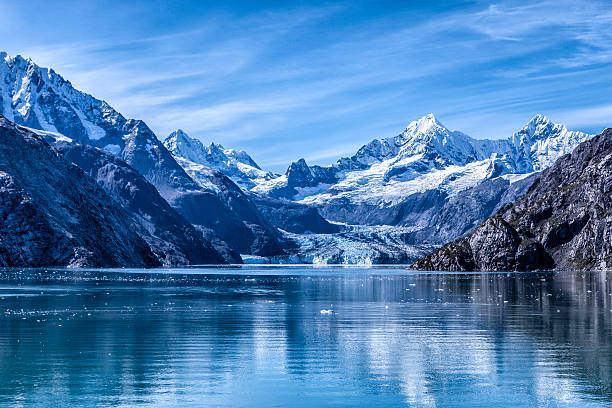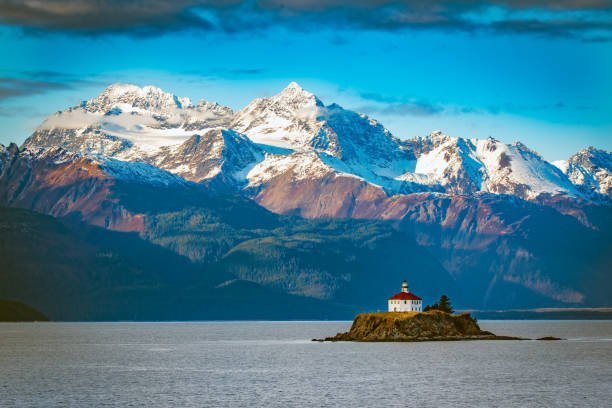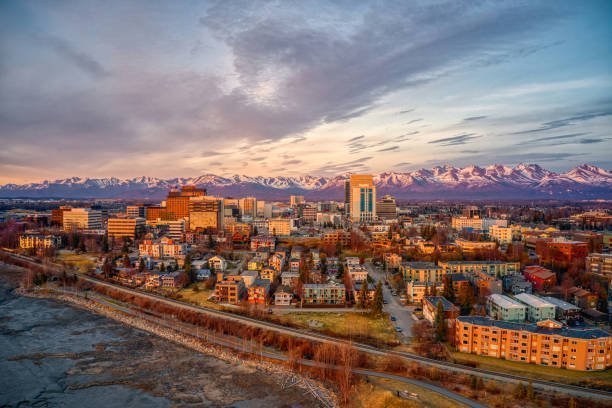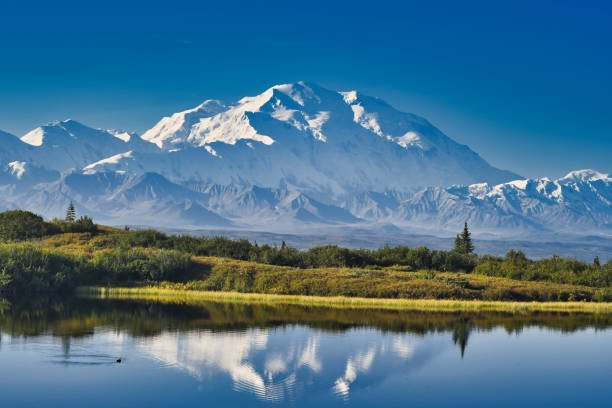Can’t wait to fly the new drone you bought? Or have you recently moved to Alaska with your drone? If so, you need to know the drone laws in Alaska to prevent you from issues with the authorities and enjoy the best scenery that Alaska has to offer you.
Flying a drone is permitted in the state of Alaska. However, it has federal, state, and local rules and regulations that govern flying of drones in the state. Alaska drone laws prevent you from using a drone for commercial salmon fishing and landing a drone at Chugach State Park for a practice run.
In this article, I will reveal to you the rules and regulations of flying a drone in Alaska so you won’t get into any trouble with the law and have a fun-filled flight. So let’s jump right in!
- Federal Drone Laws In Alaska
- State Drone Laws In Alaska
- Local Drone Laws in Alaska
- Frequently Asked Questions On Alaska Drone Laws
- Conclusion
Federal Drone Laws In Alaska
The United States drone laws are the federal drone laws in Alaska and every state in the United States of America, and were created by the federal government.
If you have a small drone that is less than 55 pounds, you can fly recreationally by following the Drone Laws in the USA as defined by FAA Part 107 guidelines.
Federal Drone Laws for Recreational Flying in Alaska

You can fly your drone for recreational purposes in Alaska as a hobby without seeking monetary compensation as long as you follow the FAA law (Part 107) and also check the state jurisdiction for additional licensing, permission, and clearance requirements.
Below are the federal rules to follow while flying your drone for recreational purposes in Alaska to keep you, your drone, and everyone safe in the airspace.
- Fly your drone only for recreational use or as a hobby.
- Follow the safety guidelines of an FAA-recognized Community Based Organization (CBO). Recreational flyers should follow the safety guidelines of existing aeromodelling organizations or use the FAA-provided safety guidelines per Advisory Circular 91-57B.
- Keep your drone within your visual line of sight or use a co-located visual observer (physically next to) and in direct communication with you.
- Don’t fly close or interfere with a manned aircraft.
- Fly below 400 feet in controlled airspace (Class B, C, D, and E) after obtaining permission from LAANC or FAA Drone Zone.
- Fly below 400 feet in uncontrolled airspace (Class G). Note: You can also be prohibited from flying in a Class G airspace in areas designated as prohibited areas, restricted areas, military operated areas, alert areas, etc. except given prior authorization from the FAA.
- Take The Recreational UAS Safety Test (TRUST) and carry proof of test passage.
- Always slap your registration number on the exterior surface of your drones and always carry the proof of registration with you. As a recreational flier, you are exempted from registering and marking your drones by the FAA as long as your drone weighs less than 0.55 lbs (250 grams).
- Do not dangerously operate your drone. For example:
- Do not interfere with emergency response or law enforcement activities.
- Do not fly under the influence of drugs or alcohol.
- Avoid flying near or over critical infrastructure.
You should be aware that you could be liable for civil and/or criminal penalties if you intentionally break any of these rules and regulations listed above as a recreational drone pilot.
As a recreational drone pilot, you are obliged to learn the rules and regulations put in place by the Federal Aviation Administration (FAA) on the proper use of drones for recreational flying.
You should also apply common sense when operating your drone in crowded public places, historic resources, and public places to keep everyone safe.
Federal Drone Laws For Commercial Drone flying in Alaska

You can fly your drone for commercial purposes in Alaska with the aim of seeking monetary compensation as long as you follow the FAA law (Part 107) and also check the state jurisdiction for additional licensing, permission, and clearance requirements.
Below are the federal rules to follow while flying your drone for recreational purposes in Alaska to keep you, your drone, and everyone safe in the airspace.
Step 1: Learn the Rules
- Read and understand the dos and don’ts as a commercial flyer the under Part 107 rules. Review a summary of the Part 107 rules (PDF). Still unsure if Part 107 rules work for you and your intended UAS operation? Check the FAA user identification tool.
- You can obtain a waiver to exceed some limit put in place by the FAA that is not covered by Part 107. Below are some laws in Part 107 that are subject to a waiver.
- Operation from a moving vehicle or aircraft. *
- Always operate your drone during the day. *
- Keep your drone from out of the Visual line of sight from an aircraft operation *
- Keep your drone in your Visual line of sight. *
- Operation of multiple small unmanned aircraft systems. *
- Yielding the right of way. *
- Don’t fly your drone over people. *
- Restriction from certain airspace. *
- Operating limitations for small unmanned aircraft.
- *The FAA will not waive this section to allow the carriage of property of another by aircraft for compensation or hire.
- You should read about the Part 107 Waiver application process if your drone operation requires a waiver.
- Commercial drone operators should steer clear of flying close to airports as it might be challenging for human aircraft to spot and avoid a drone in flight. Keep in mind that the UAV operator is accountable for any safety threat their drone poses in an airport area and must avoid crewed aircraft. Read more about flying near airports.
Step 2: Become an FAA-Certified Drone Pilot by Passing the Knowledge Test
- To be eligible to get your Drone License (Remote Pilot Certificate), you must be:
- At least 16 years old
- Able to read, write, speak, and understand English
- Be in a physical and mental condition to safely fly a UAS
- Review the entire process to get your Drone License or Remote Pilot Certificate.
- Study for the Knowledge Test by reviewing the Test Prep materials provided by the FAA.
- Obtain an FAA Tracking Number (FTN) by creating an Integrated Airman Certification and Rating Application (IACRA) profile before registering for a knowledge test.
- Schedule an appointment to take the Knowledge Test at an FAA-approved Knowledge Testing Center.
- Once you’ve passed your test, complete FAA Form 8710-13 for a remote pilot certificate (FAA Airman Certificate and/or Rating Application) using the electronic FAA Integrated Airman Certificate and/or Rating Application system (IACRA)*
- You are now eligible to operate as a commercial drone pilot.
Step 3: Register your drone with the FAA
- Pay the registration fee of $5 with your credit card or debit card to get a valid three year license for three years for you to commercially fly drones.
- Visit dronezone.faa.gov and select “Fly sUAS under Part 107” to create an account and register your drone.
- After that, mark the exterior surface of your drone (PDF) with your registration number for identification and tracking if it were to get stolen
Always be sure to fly your drone safely and within FAA guidelines and regulations. It is up to you as a drone pilot to know the rules of the sky and where it is safe to fly. You should try the user identification tool if you aren’t sure if Part 107 is right for you and your operation
Federal Drone Laws for Public Drone Flying

Federal drone laws are drone laws for federal, state, local, or tribal government entities, including schools and universities that use unmanned aircraft systems or drone technology for their operations.
Federal Restrictions & Requirements
- Be a political subdivision of the United States government, a State or U.S. territory government, the District of Columbia, or an Indian Tribal Government listed in the Robert T Stafford Disaster Relief and Emergency Assistance Act (42 U.S.C. § 5122)
- Own and operate the unmanned aircraft, or for non-federal public aircraft operators (PAO’s) have an exclusive lease on it for more than 90 days
- Fly missions that meet the statutory criteria of a governmental function on a flight-by-flight basis
- Not fly for a commercial purpose or receive compensation for flight operations.
Emergency Situations
First responders and other organizations responding to natural disasters or other emergency situations may be eligible for expedited approval through our Special Governmental Interest (SGI) process. Operations that may be considered include:
- Firefighting
- Search and Rescue
- Law Enforcement
- Utility or Other Critical Infrastructure Restoration
- Incident Awareness and Analysis
- Damage Assessments Supporting Disaster Recovery Related Insurance Claims
- Media Coverage Providing Crucial Information to the Public
To apply for a waiver through the SGI process, you must be an existing Part 107 Remote Pilot with a current certificate OR you must have an existing Certificate of Waiver or Authorization (COA). To submit a waiver through this process, fill out the Emergency Operation Request Form and send to the FAA’s System Operations Support Center (SOSC) at 9-ator-hq-sosc@faa.gov .
If approved, the FAA will add an amendment to your existing COA or Remote Pilot Certificate that authorizes you to fly under certain conditions for the specified operation. If denied, operators should NOT fly outside the provisions of their existing COA or part 107. Operators have the option to amend their requests.
* This process is called the Special Government Interest (SGI) amendment process and is outlined in FAA Order JO 7200.23A
State Drone Laws In Alaska
The Alaska state drone laws are the drone laws that apply to the entire state of Alabama and were created by the Alabama state Legislature.
Alaska’s has one state-wide law concerning the use of drones and other Unmanned Aerial Vehicle in the state according to the Alaska Department of Transportation and the Alaska State Legislature,
Alaska does not currently have any specific laws in place for recreational or commercial drone operators. In 2015, a task force organized by the 29th state legislature of Alaska issued a Drone / UAS Operator Safety Guidelines and FAQs about Privacy.
HB 255 // 2014
Alaska’s drone laws are one of the strictest in the United States. Drone operators are required to maintain a visual line of sight, fly below 400 feet during daylight hours, and keep the drones away from manned aircraft, according to a state-wide drone regulation adopted by the Alaska State Legislature.
This regulation establishes restrictions on how and if police enforcement can store pictures and videos taken by drones when using them in their operations.
- According to HB 255, a drone is any powered aircraft or unmanned aerial vehicle that can be operated remotely or autonomously and does not require a human pilot to fly.
- The House Bill 255, which was passed in 2014, imposes restrictions on the regular use of drones by police enforcement. The bill does not grant law enforcement the right to employ drones to conduct criminal investigations or obtain criminal intelligence.
- The Bill also establishes who receives video footage and photos from police enforcement and how long they may keep it.
- The Bill contains details on whether and how photographs and videos taken by drones may be preserved.
- While cameras and loudspeakers are permitted, the bill prohibits drone pilots from carrying harmful content such as rubber bullets and tear gas on them.
- You are not required to turn over any footage shot by a recreational pilot under HB 255. The hitch is that if you do submit your footage with police enforcement, they must keep it on file permanently.
- Drone pilots must also be at least 18 years old, complete drone flying training, pass a test, and maintain insurance.
- A state has not given over any of its legal authority to the federal government, despite the fact that the Federal Aviation Authority (FAA) controls the sky.
Local Drone Laws in Alaska
The local drone laws in Alabama are drone laws that apply only to certain regions, cities, or counties within the state of Alabama and were created by the local authorities within that region.
11 AAC 20.020 – Chugach State Park

Alaska Administrative Code 11 AAC 20.020, a section of the Alaska State Legislature, specifies the rules for operating unmanned aircraft in Chugach Park.
According to the law, “the use of aircraft is allowed in Chugach State Park on Bold airstrip located at the Inlet of Eklutna Lake. (b) The use of aircraft for the purpose of practice landing is prohibited.”
Let me give you a little background information.
The 495,204-acre Chugach State Park near Anchorage is located in the state’s southern center. The park is well-known for Eklutna Lake, which has a 12.7-mile walking track around its beaches and is open twenty-four hours a day.
All types of people use the lake, including visitors, mountain bike riders, horseback riders, ATV riders, and hikers.
At least at the lower altitudes, the diverse plant life includes wildflowers, mushrooms, ferns, and trees like the white spruce, quaking aspen, and paper birch.
Then you’ll discover wild geraniums, alpine forget-me-nots, fireweed, dwarf dogwood, and other plants at greater elevations.
The aforementioned airfield at the lake’s entrance is located in this region of the Chugach State Park as well. You’re okay as long as you stay still and refrain from attempting to practice landing!
5 AAC 92.080 – Hunting
This law applies to the use of drones and other unmanned aerial vehicles for hunting animals in Alaska.
1. The Alaska State Hunting Regulations prohibit using drones or other unmanned aerial vehicles (UAVs) to locate wildlife when it is in hunting season.
2. The use of unmanned aerial vehicles (UAVs) for hunting, fishing, or other forms of live ocean resource management is prohibited.
3. It is forbidden to employ wirelessly operated, airborne, or remote-controlled equipment to spot or locate games using cameras or other video equipment.
4. Any forward-looking infrared gadget that is used for hunting is prohibited from being taken, carried, owned, or used.
5. Any electronic camera or other sensory equipment that sends signals via wireless transmission is forbidden by law.
6. It is prohibited to use a wireless communication device to catch a specific animal until three in the morning the day after the capture.
7. Anyone who does not possess a bow and arrow or is not accompanied by a falconer is not permitted to use artificial light or lights mounted on or attached to an unmanned aircraft near game management units where a large game may be taken by bow and arrow.
8. You are not allowed to hunt game animals, including fish and migratory birds, from an aircraft or use an unmanned aerial system (UAS) or other aircraft to detect, herd, or drive them.
State Code 33.398 – Salmon Fishing
Alaska’s Administrative Code is found in State Code 5 AAC 33.398. Salmon fishing is tied to the illegal use of airplanes in this region of southeast Alaska.
According to the law, “a person may not utilize an unmanned aircraft to find salmon for the commercial taking of the salmon or to direct commercial salmon fishing operations during an open commercial salmon fishing season.”
I want to make sure the differentiation is crystal obvious. You can fly your drone above salmon-filled lakes in Alaska and even capture images or videos of the salmon as they scale a waterfall.
Any function or gadget on your drone that might help you find salmon for commercial fishing is prohibited, though, as the use of such equipment would lead to an unfair advantage for you.
The State Code 5 AAC 33.398 has more to it. The second part of the rule is as follows: “A person may not use an aircraft to locate salmon for the commercial taking of salmon or to direct commercial salmon fishing one hour before, during, or one hour after an open commercial purse seine fishing period or in any area other than a terminal harvest area.”
Therefore, the second clause of State Code 33.398 prohibits you from using a drone to increase your chances of success when purse seine fishing for salmon.
Frequently Asked Questions On Alaska Drone Laws

Do you still have some unease as you prepare for a day of drone flights in Alaska? Your most pressing inquiries will be addressed in this FAQ area.
Can I Fly a Drone in Chugach State Park?
You can fly a drone in Chugach State Park. Chugach State Park has drone flight regulations in place to ensure national safety. Following the guidelines will allow you to fly a drone at Chugach State Park for the day without violating any laws, so feel free to do so!
Can I Fly a Drone in Denali National Park?
You can’t fly a drone in the Denali National Park because it has been banned by the authorities. However there are other top spots where you can fly your drone in Alaska to capture beautiful scenery.
Is it illegal to fly a drone over private property in Alaska?
It is legal to fly drones above a house or private property in Alaska as long as you don’t hover around them or use your drone to capture or record them without permission from the property owner.
Can I fly a drone in Alaska without a license?
Recreational drone pilots don’t need a license to fly a drone in Alaska, but you must pass a free online safety test (TRUST). However, commercial drone flyers must get a certificate (Part 107) from the FAA. Furthermore, all drones weighing more than 249 grams must be registered to operate in Alaska.
Can you shoot down a drone in Alaska?
Shooting down a drone in Indiana is illegal and against federal law because drones are protected by the FAA. You could serve some jail time or pay a large fine if you shoot down a drone in Indiana. You are advised to report it to the authorities if you see a drone hovering above you or your property.
Conclusion
Alaska boasts some of the most beautiful places to fly a drone and explore the majority of the landscape with your device. However, to ensure that everyone may enjoy drone flight, be careful to abide by the laws that have been put in place.
You should also check out the best places to fly a drone in Alaska if you want to see beautiful places that are legal to fly in various cities.

